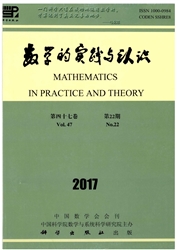

 中文摘要:
中文摘要:
根据“结构-行为-绩效”的SCP分析框架,分析了企业在多寡头产量竞争的Cournot市场结构、多寡头价格竞争的Bertrand市场结构、1个领先者和多个追随者的Stackberg市场结构下,分别采取自主创新、跟踪新产品开发和引进模仿等不同的产品开发战略的市场绩效.结果表明,在周质产品多寡头市场上的产量竞争中,企业采取领先者、竞争者和追随者3种行为的企业均衡产量和企业利润依次递减:多寡头Stackberg市场结构在总产量、消费者剩余和社会福利上表现更佳;多寡头Cournot市场结构在市场价格和行业总利润上更高.在异质产品多寡头市场上的Bertrand价格竞争中,互补品市场的均衡价格和均衡产量相对于替代品都提高;当替代程度较大时.寡头数目较少,同时每个寡头的均衡产量和均衡价格都上升.
 英文摘要:
英文摘要:
Based on SCP paradigm of "Structure-Conduct-Performance", the paper com- pares the market performance when enterprises take the different product R&D strategies as leader, competitors and followers among the multiple oligopolies Cournot model, the multiple oligopolies Bertrand model and one-leader multi-followers Stackelberg model. The results show that in the homogeneous product multiple oligopolies market enterprise equilibrium output and profit are descending in sequence along with enterprise taking the leader, competitors and followers strategies; the multiple oligopolies Stackelberg model is more successful in the total output, customer surplus and social welfare; and tile multiple oligopolies Cournot model has better supported in the market price and total profit. In the heterogeneous product multiple oligopolies Bertrand market, the equilibrium price and output of complementary goods are higher than substitute goods; the bigger the substitute degree is, the smaller the number of oligarchs is, but the equilibrium price and output are increasing.
 同期刊论文项目
同期刊论文项目
 同项目期刊论文
同项目期刊论文
 Why is Chinese GDP Statistics Data Distorting? An Explanation of Game Equilibrium Evolutionary Model
Why is Chinese GDP Statistics Data Distorting? An Explanation of Game Equilibrium Evolutionary Model Constructivism scenario evolutionary analysis of zero emission regional planning: A case of Qaidam C
Constructivism scenario evolutionary analysis of zero emission regional planning: A case of Qaidam C Dynamics of a delayed discrete semi-ratio-dependent predator-prey system with Holling type IV functi
Dynamics of a delayed discrete semi-ratio-dependent predator-prey system with Holling type IV functi 期刊信息
期刊信息
